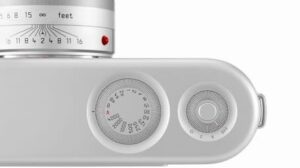How Autofocus Works in Photography: A Comprehensive Guide

Photography has been transformed from a meticulous manual process to a swift and accurate automated one thanks to autofocus. A thorough understanding of autofocus is essential for photographers who wish to capture sharp, clear images on a consistent basis. We explore the intricacies of autofocus in this article, exploring its evolution, multiple systems, and critical components.
The evolution of autofocus:
The introduction of autofocus to modern photography was initially met with skepticism. A growing number of advancements, such as the integration of artificial intelligence (AI), have improved its capabilities, making it more accurate and faster.
The difference between active and passive autofocus systems:
As a result of limitations, active autofocus is now outdated. Compared to passive autofocus, which analyzes incoming data, passive autofocus offers greater flexibility and accuracy.
Autofocus with phase detection:
DSLRs use phase detection autofocus to determine focus accuracy quickly by splitting light into two images. It offers unparalleled accuracy and speed despite requiring hardware calibration.
The Contrast Detection Autofocus system works as follows:
Contrast detection autofocus is used in Live View cameras as well as mirrorless cameras in order to determine focus based on the contrast levels in the scene. Despite being slower, it can adapt to different lighting conditions and scenes.
Autofocus hybrid:
Depending on the situation, some cameras combine phase and contrast detection for versatility. With this hybrid approach, the focus accuracy can be optimized regardless of the shooting conditions.
Points to focus on:
Modern cameras feature vertical, horizontal, and cross-type focus points. A cross-type point is the most accurate and versatile, especially when it comes to capturing moving objects.
Modes of focusing:
Autofocus modes on cameras include Single, Continuous, and Hybrid/Automatic, which each suit different shooting scenarios. The best focusing method for still subjects is one-shot focusing, while the best focusing method for moving subjects is continuous focusing.
Trends for the future:
Machine learning and AI integration are improving autofocus systems, including features such as eye-tracking and subject recognition. Future advancements will further improve the quality of captured images with even more precise focus.
Autofocus plays a critical role in:
The autofocus system is crucial for taking sharp photos, but its inner workings can be complex, significantly affecting the image quality. To capture the perfect shot, photographers must understand autofocus systems and their limitations.
Sensors for autofocus:
The autofocus sensor determines sharpness by assessing changes in contrast, which is one of the most important factors in determining relative focus. Autofocus performance can be affected by factors like light level, subject contrast, and camera/subject motion.
Autofocus Points & Types:
There are more autofocus points on high-end cameras, providing greater flexibility and accuracy. The cross-type sensor provides more precise focusing than vertical line sensors.
The following autofocus modes are available:
For optimal focus accuracy, it is essential to choose the right autofocus mode. As a result of different modes, photographers can capture sharp images under a variety of shooting scenarios.
AF Assist Beam:
The active autofocus method uses a visible or infrared beam to assist autofocus sensors in detecting the subject. The system works particularly well in low-light or low-contrast situations, ensuring accurate focus regardless of the situation.
In conclusion:
By simplifying the process of achieving crisp, clear images, autofocus has revolutionized photography. With an understanding of how autofocus works and its various components, photographers can capture stunning photographs with ease. The autofocus systems of modern cameras will undoubtedly improve as technology advances, enhancing their capabilities even further.



